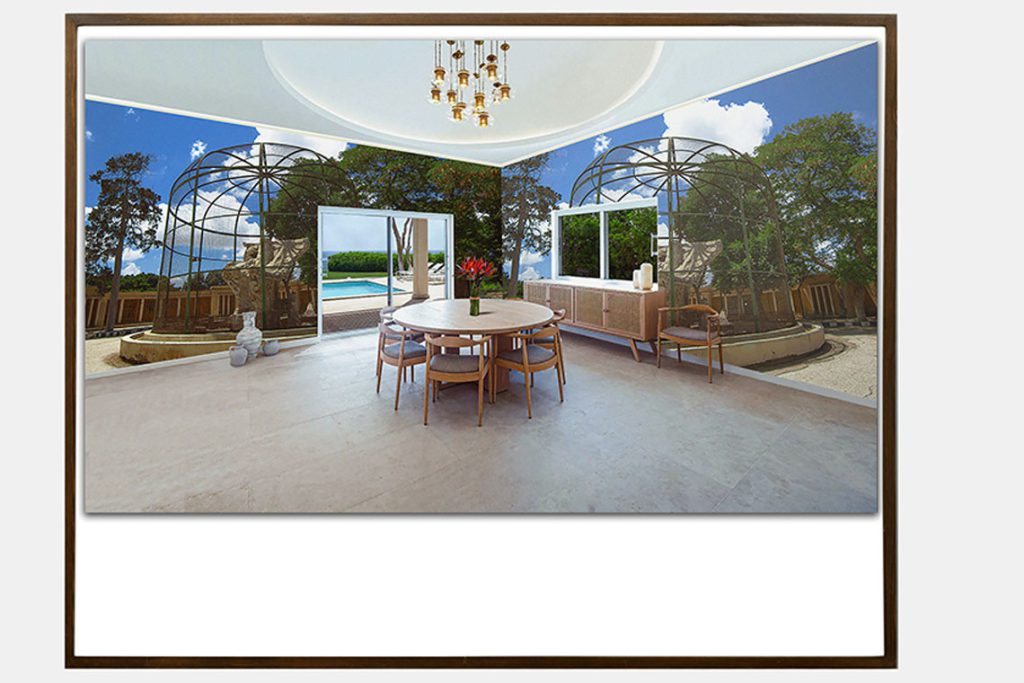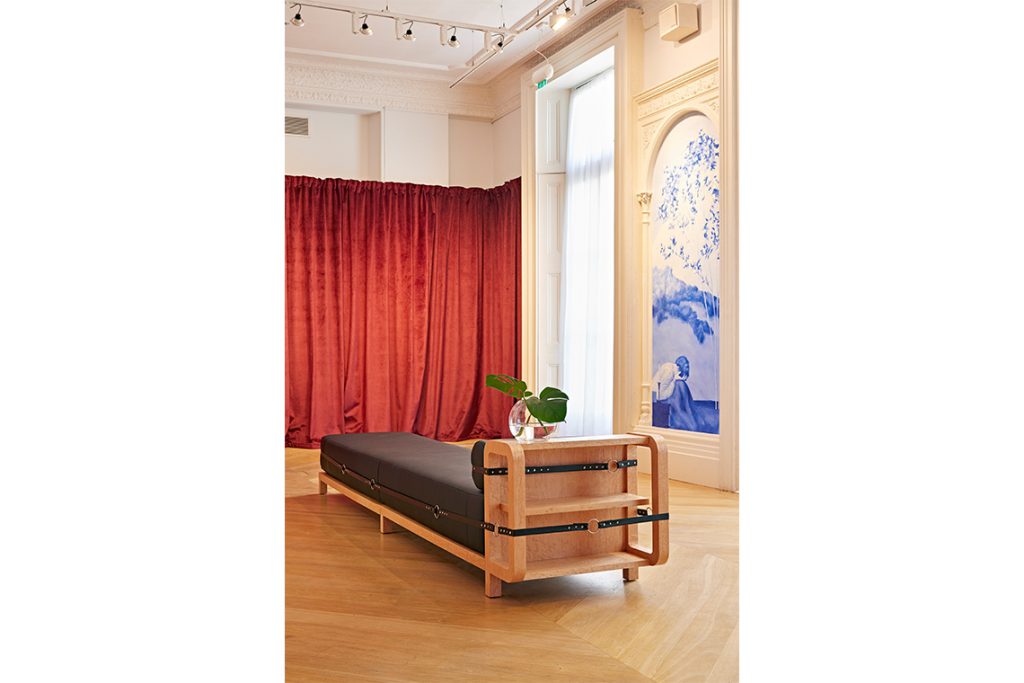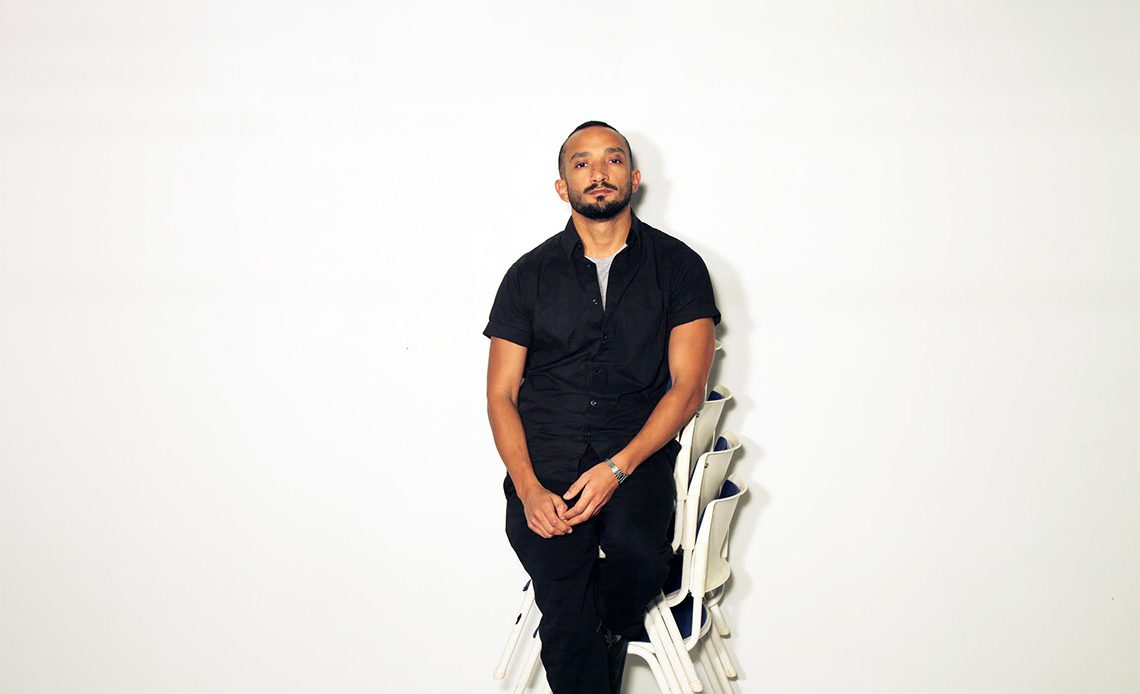The artist pulls back the curtain on his installations creating idealised spaces of private sanctuary and also reveals how he encodes forms of criticism in his art that could not be openly expressed otherwise.
Canvas: How would you characterise your work?
Mahmoud Khaled: It’s hard to tell, because within each work I understand new sensitivities. I had a very formal artistic education in painting, but I think everything I’ve done since then has been about undoing what I learned. The most important thing I took away from it was understanding how to create an image out of nothing, and stage my own world within the magic of a white canvas.
Your recent show The Beautiful Captive at Gypsum Gallery critiqued Egypt’s focus on building mega-infrastructures. Can you explain your motivations?
All I see in Egypt are advertisements for new luxury compounds, residences or shopping malls. The Beautiful Captive followed the idea that in a capitalist society our citizenship is only practiced within these gated structures, and art has become purely a means of filling the vast amounts of new wall space built every year, like a decorative wallpaper. Imagining an artwork that could act as wallpaper led me to a series of photographs of empty enclosures at Alexandria’s state zoo. Wallpaper gives an illusion of space to make a room seem larger or richer than it is, which I feel is a clear metaphor of the Egyptian state.
Many of your installations invent domestic spaces within an institutional setting, like Fantasies on a Found Phone, Dedicated to the Man Who Lost it at London’s Mosaic Rooms in 2022. Why do you so often build private spaces within public spheres?
I always treat museums and galleries as blank canvases. Returning to what I said about the magic power of the canvas, in a ‘white cube’ gallery space you can shape your own world. So I privatise these spaces, turning them into homes to imagine a narrative or history that doesn’t exist in real life, often dedicated to a person who has not been allowed to exist. I think every daily decision is a choice between the public or private spheres, and there’s tension between the two when one takes up more space than the other, which in a country like Egypt is very politically charged. The act of protecting privacy is political activism in itself.

Mahmoud Khaled. The Beautiful Captive. 2023. Inkjet print on archival photo paper. 80 x 103 cm.
Image courtesy of the artist and Gypsum Gallery
The show centred around the contents of a fictional phone, from which you extrapolated the character of its owner and staged the gallery as the owner’s home. How did you create this man’s persona from these invented narratives?
It was a very fun process, rather like writing a novel. I first explored the private and public contents of the phone’s data. Your photos can reveal a lot about your life, tastes, class or political orientation If a policeman were to search through your private pictures or messages they would be able to immediately profile you. In this case, the owner of the phone is understood to be a very elegant man, with a profound taste in art, decor, poetry and literature. He was also well travelled, as you can tell from his images, but also anxious and having to deal with serious insomnia, which is demonstrated by the amount of sleep aid apps on his phone. Many of these photos were hung around the gallery, as they would be in a home, and sleep-improvement podcasts were played on speakers for the audience to get a sense of his nightly struggle to sleep.
Do you see yourself in the character? Or are you making it about someone else?
I have to say, it’s mostly about me. I treat these characters as alter egos, as it makes it easier for me to express things I otherwise could not. There’s always a question of how much of myself I remove and keep in each character.
The project Proposal for a House Museum of an Unknown Crying Man at the 2017 Istanbul Biennial also took the form of an invented house museum. What draws you to this idea?
A house museum is built around absence, telling a story of a person who is no longer there. Unless its inhabitant has died, disappeared or been sent into exile or prison, a house museum cannot exist. Despite rooms full of antiques and artworks, the main focus is to imagine who owned all of it, and who used to live surrounded by these objects. This exercise for a visitor is very interesting to me.
The Unknown Crying Man is the name given to the photograph of an anonymous man hiding his face with a white cloth, one of 52 men to be publicly arrested at a boat party in Cairo in 2001. Why did you choose to base your narrative on a real figure of such personal relevance to yourself and many others in Egypt?
It was a big challenge and I had to ask myself many moral questions. This image and this person are both real. When I was in college in 2001 I saw it in every newspaper. Despite the photo specifically trying to ‘identify’ him, it is in fact an abstracted image; the man’s face is hidden by a white cloth and shows barely any information. But it is so politically and emotionally loaded that it became an icon for the community. Based on this man’s experience, my project posited that he had fled Egypt in exile and created a new home for himself in Istanbul. Something that made the finished project very rich was the audio guide I designed, decoding certain aspects of the house and creating a very institutional atmosphere.

What is the meaning behind your use of red curtains?
The curtains are an obvious repeated motif in my work, always part of my exhibition vocabulary. In The House Museum of the Unknown Crying Man it worked very well with the style that I was trying to create and also referenced Rene Magritte and David Lynch, who both masterfully use red curtains in their work. Equally, from a material point of view red velvet is a fabric we only see in rich homes. It’s suspended wealth. I often create spaces that portray wealthy men, because I like to imagine people being able to afford the privilege of staging a perfect world in their own home. When The Unknown Crying Man was sent to Istanbul, he managed to build his own world in that exile.
What is on the other side of the curtain?
The real world, always. When you open the curtains, you see where you live. When they’re shut, however, you can make your house as if it were anywhere, which is only possible thanks to the curtain hiding the real world.
Curtains have a way of expressing both privacy and elegance. How do you use them as representations of wealth and power in your work?
I use rich furnishings and the trappings of power to represent the people in my government who use wealth to either disguise themselves or create fake narratives of power. This is also what the exhibition at Gypsum Gallery is about.
The performance of luxury shows a certain paradigm of a country that is not really there. That is how I feel living in Egypt right now. All these fancy projects and huge compounds don’t feel rooted in society. Instead, these civic institutions, like the zoo for example, are all based on captivity, a captivity that has been made theatrical and luxurious. The animals have their own food, their own doctors and constant care, but they are incarcerated. They are performing without knowing they are performing. This performance, without any consciousness of the act, draws a clear link between government and society.
How do you navigate the idea that social power structures are hidden in plain sight, but that it is not allowed to acknowledge this and openly critique them?
For me, the main challenge of art is how to make things beautiful and accessible but with a lot more to unwrap. I want to have my work speak to a larger audience, or to people who might not necessarily go through the same experiences as me but can still find beauty in them. Being born and raised in Egypt, you learn to be smarter than the authorities that limit this discussion or space for you. I have to think carefully about the presentation of my work to make sure I’m one step ahead of them. For example, I made a book of The Unknown Crying Man project, which of course talked about the arrest of the 52 men, but, concerned about the legality of having this in bookshops, I disguised the cover to look like it was about architecture. It’s not necessarily about camouflaging my work, but encoding it. The man’s house was a three-floor Bauhaus villa in the middle of Istanbul, but it didn’t have a flag on the roof.



